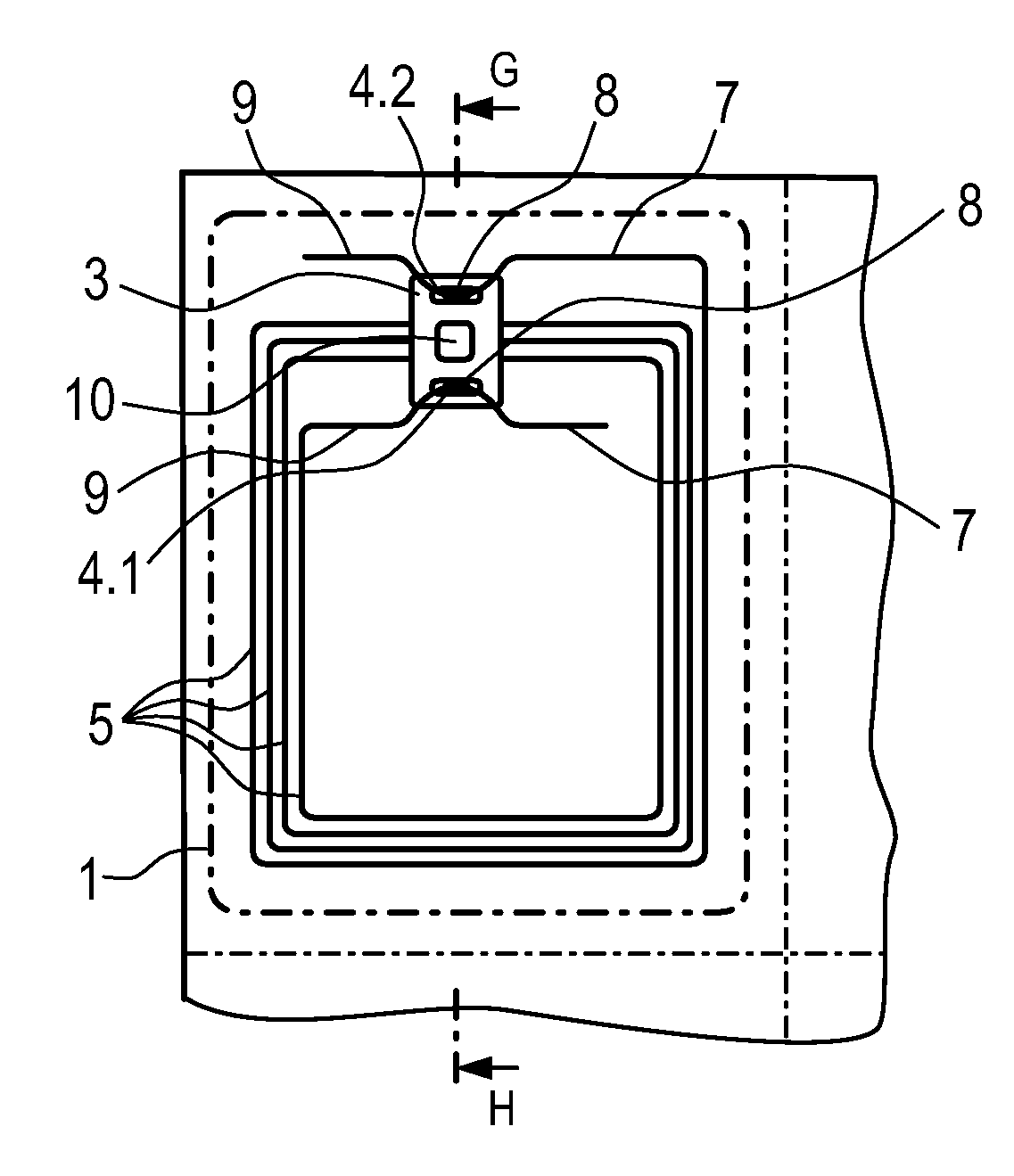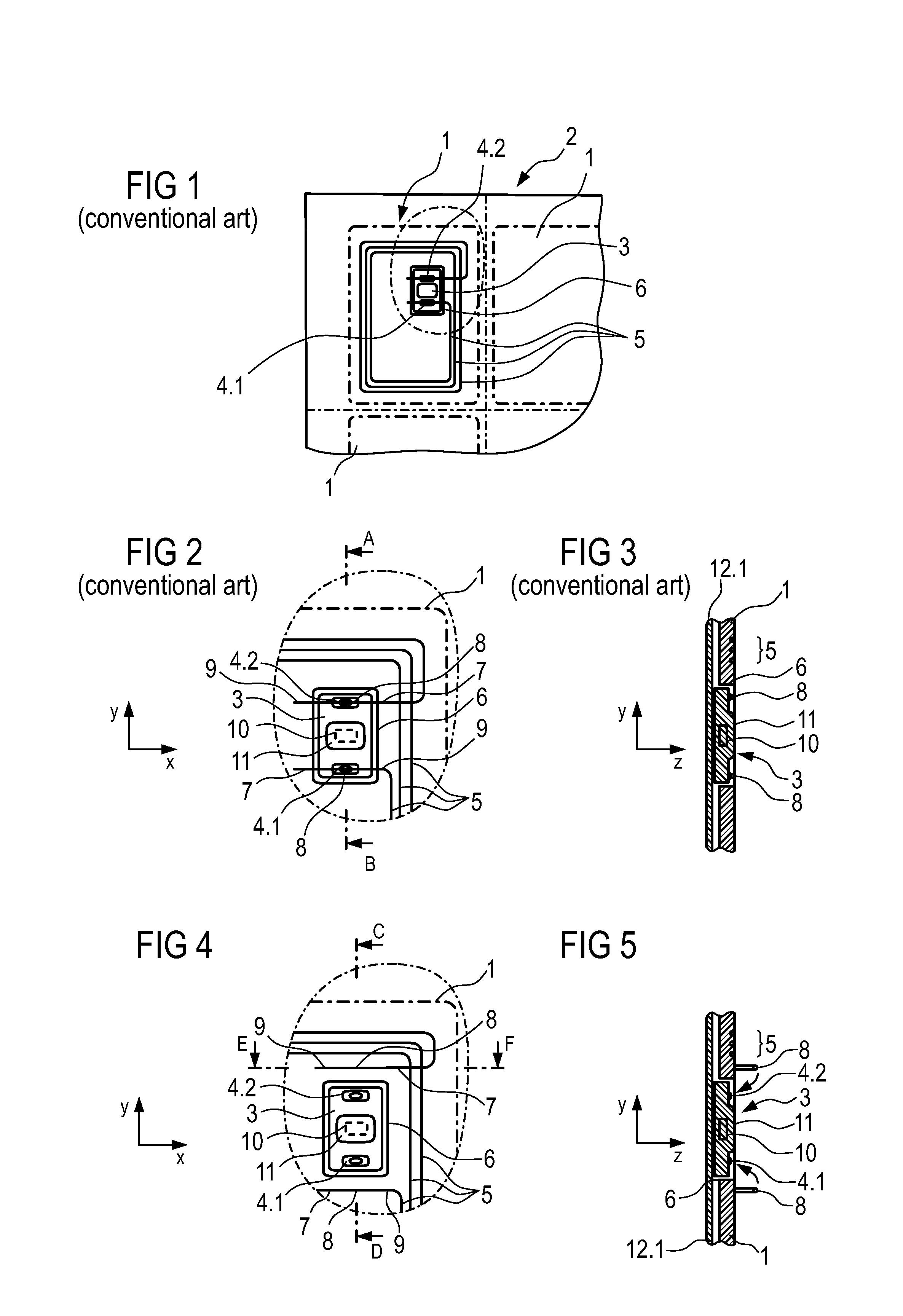Method and arrangement for producing a smart card
a smart card and arrangement technology, applied in the direction of instruments, antennas, electromagnetics, etc., can solve the problems of only testing the wire connectors or antenna coils of a smart card produced according to a conventional method, and is much more expensive than the substrate and antenna coils, so as to achieve less mechanical stress
- Summary
- Abstract
- Description
- Claims
- Application Information
AI Technical Summary
Benefits of technology
Problems solved by technology
Method used
Image
Examples
Embodiment Construction
[0033]FIG. 1 is a top view of a substrate 1 of a smart card, which can be one of a multitude of segments of a multi-image-board 2. The smart card 1 comprises a chip module 3 with two contacting areas 4.1, 4.2 and a wire connector 5 in the shape of an antenna coil arranged around the chip module 3. The wire connector 5 is laid, attached and contacted. The chip module 3 is attached on the substrate 1 in a mounting location 6, which may be designed as a recess in the substrate 1. For producing the smart card, the substrate 1, which can also be in single-image-format, is placed on a bench. The chip module 3 is arranged in the mounting location 6 with the contacting areas 4.1, 4.2 up. If the mounting location 6 is a recess in the form of an aperture, the chip module 3 may be fixed by a vacuum from below or by attaching it to an additional film (not shown) that is arranged below the substrate 1.
[0034]The wire connector 5 is attached to a surface of the substrate 1 or at least partially em...
PUM
| Property | Measurement | Unit |
|---|---|---|
| thickness | aaaaa | aaaaa |
| contacting area | aaaaa | aaaaa |
| areas | aaaaa | aaaaa |
Abstract
Description
Claims
Application Information
 Login to View More
Login to View More - R&D
- Intellectual Property
- Life Sciences
- Materials
- Tech Scout
- Unparalleled Data Quality
- Higher Quality Content
- 60% Fewer Hallucinations
Browse by: Latest US Patents, China's latest patents, Technical Efficacy Thesaurus, Application Domain, Technology Topic, Popular Technical Reports.
© 2025 PatSnap. All rights reserved.Legal|Privacy policy|Modern Slavery Act Transparency Statement|Sitemap|About US| Contact US: help@patsnap.com



